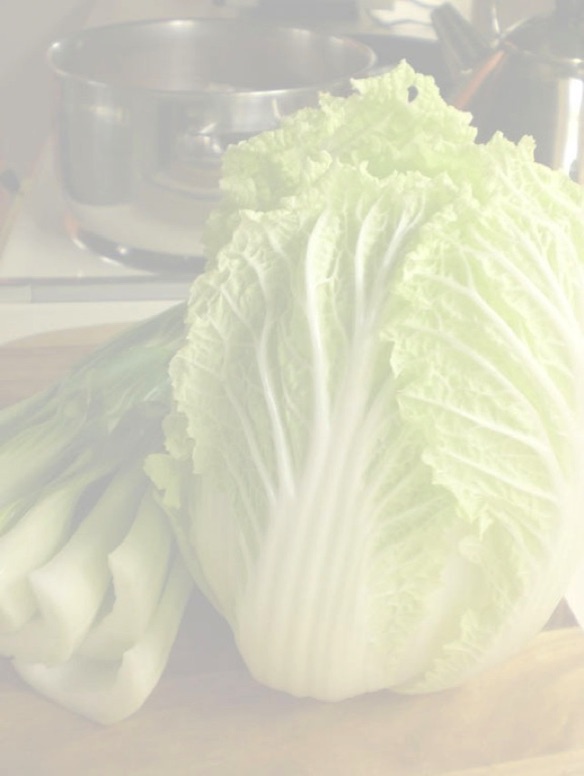

°Foods of various colors and textures can taste great together in combination. Begin with the abundance of leafy greens. Some greens like spinach are delicious raw, while others like Swiss chard must be cooked for better taste. Experiment. Use foods in proportion to each other. For example, make endless variations of rainbow salad. Chop 4 cups of napa cabbage and other leafy greens. Dice cucumbers, carrots, red pepper, radishes, tomatillos, an orange, and a firm mango. Add minced garlic and sliced green onions. Use a can of legumes like chick peas or black beans plus a can of diced tomatoes. Add a cup of chopped fragrant herb, like cilantro or parsley. Sprinkle with a handful of seeds like almonds, walnuts, sesame, or sunflower. Mix and season with your choice of olive oil, lemon, ginger, mustard, balsamic vinegar, salt, pepper. Serve on a modest bed of cooked whole grains like rice, wheat, or barley.
°Canned tomatoes are excellent ingredients. Tomatoes picked and canned in their prime retain taste and nutrition. Like with all processed foods, check salt content, so you don’t add any more.
°Use the great convenience of canned beans. You will find even greater variety in dry beans, so venture to cook your own. Cooking these pod seeds is as simple as cooking rice, except for one preliminary step: soak a few cups of dry beans in abundant water overnight. Then cook them in fresh water. They need 2, 3, or 4 hours depending on the size of the bean. When you try a new bean, use a timer and check them every hour until the bean is soft enough to squish between your fingers. Jot down how long it took and next time you save yourself a step. Add salt and other ingredients only after the beans are soft. Get familiar with some recipes then create your own.
°Cooking whole grains does not consume your time, simply set a timer. You do not need to stir them and you don’t even need to cover them. These are dry seeds of grasses and they rehydrate as they cook, so just like beans they need abundant water. If they soak all the liquid and are still tough, add more water. Refer to time tables, but most of all, experiment! As you experiment, it is better to use too much liquid than not enough. You can discard the excess water in the end. Large grains like brown rice and whole wheat need to cook for 45 to 90 minutes. Smaller grains like cut oats, quinoa, or amaranth will take only 20 minutes. Season them with salt, lemon, and herbs for a savory dish; or with cinnamon, diced fruits or berries, and vanilla for a sweet breakfast or desert.
°Health and disease are linked to our choice of food. We know this already. Lose the taste for meats, cheese, sugar, fats, and too much salt. Cultivate a taste for whole plant foods.
°A bowlful of plants can turn into a unique and wholesome meal. Let variety and color be your guide. Bread, pizza, pasta, bagels, pretzels, muffins, crackers, cookies, cakes, are all made from the least nutritious part of the wheat kernel, which is then ground into flour. These items can appear different and still be the same food. The tan color is often from a token amount of whole grain or from molasses. Nutritionally these foods are the same and only made different with added ingredients such as salt, milk, eggs, oil, sugar, and other flavorings. Emphasize true variety by eating plants.
°Begin exploring right where you are. Just begin.
°Cooked whole grains are very tasty. Adventure into the great variety and taste of whole grains - brown rice, rye, oats, quinoa, buckwheat, amaranth, millet, hulled barley, wild rice. Some have different cooking time, cook them separately. Others can be cooked together, like oats and quinoa. Mix different colors proportionately for a pleasant visual effect, like one cup brown rice with a third cup black wild rice. Sprinkle cooked yellow amaranth over a plate of black beans.
°Preparing food with friends and family celebrates the joy of life. Make your cooking space bright, clean, and inviting. Welcome your work. Gathering to prepare food demands love and a supple disposition. Allow the creative spirit to be present. In the kitchen, give others permission to express themselves. Lead without coercion or impingement. Envision working side by side with friends and family, having pleasant conversations, getting to know each other more intimately, encouraging the flow of life!
° Think ahead. Eat mindfully. In time this will become second nature, but initially you need a plan. If you are already pressed for time and hungry, you won’t have the patience to make a tasty soup. Unless your shopping list is made with recipes in mind, you won’t have the ingredients at hand to prepare a meal. It’s impossible to come up with a dish full of colors and flavors if your kitchen is stocked with browns and whites. Clean out your pantry of old attitudes. Empty your cupboards of old inherited or seldom used space-occupying contraptions. Take the time to pull out three recipes you would like to perfect. Then get started.
©2008 Ana M. Negrón M.D.
